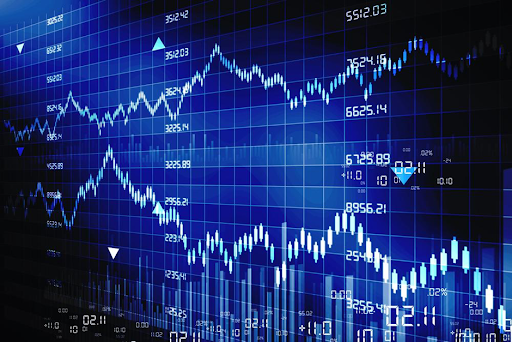Resources
What drives the price of gold? Can silver be its alternative?
Promoted by ETF Securities.
For many, the word gold conjures up a sense of the exotic and beautiful items of immense value, or perhaps a secure vault overflowing with gold bars, coins or ingots. For investors however, with increasing world volatility, gold is a staple in their portfolios as a safe haven asset. Here we take a look at the factors influencing the gold price and how investors can use gold as a hedge for both geopolitical risks and to protect against inflation.
What drives the price of gold? Can silver be its alternative?
Promoted by ETF Securities.
For many, the word gold conjures up a sense of the exotic and beautiful items of immense value, or perhaps a secure vault overflowing with gold bars, coins or ingots. For investors however, with increasing world volatility, gold is a staple in their portfolios as a safe haven asset. Here we take a look at the factors influencing the gold price and how investors can use gold as a hedge for both geopolitical risks and to protect against inflation.

Trade idea – ETFS Physical Gold (GOLD)/ ETFS Physical Silver (ETPMAG)
|
Factors influencing the gold price
Unlike most commodities, fluctuations in the gold price are driven less by physical demand and supply but more by investors’ views on wider market sentiment, such as unexpected geopolitical risks. The gold price may rise when sentiment in the market is worsening, as gold can be an effective portfolio diversifier, historically uncorrelated to other assets. Additionally, when the world feels a little more threatening, unsettled and dangerous, gold is often viewed as the ‘go-to’ safe haven.

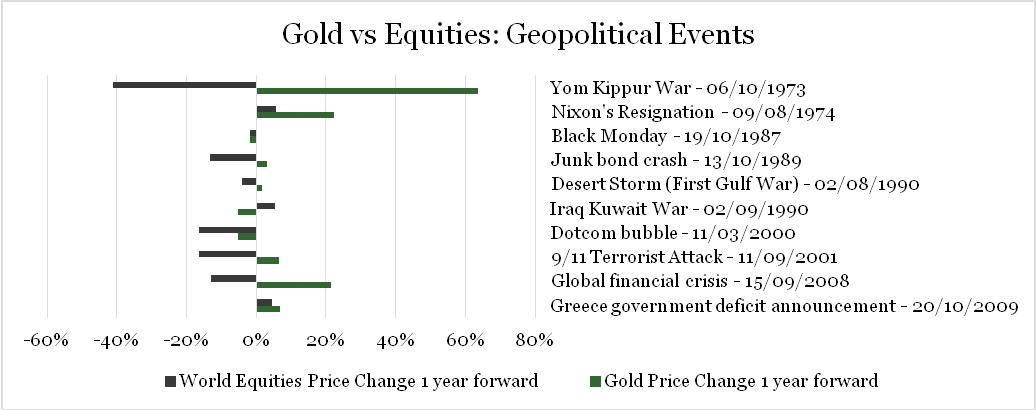
Source: Bloomberg, June 2017
Historical performance is not an indication of future performance and any investments may go down in value
Gold against inflation
Gold is also widely viewed as a tool against inflation. Historically, the gold price tends to appreciate when inflation and interest rates are on the rise. The chart below shows how the gold price moves largely in-line with the inflation (CPI) of the United States.
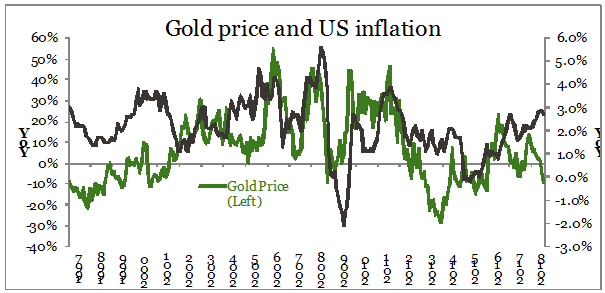
Source: Bloomberg, September 2018
To hedge or not to hedge?
Gold can be subject to price variations on different exchanges due to currency fluctuations against the US Dollar (gold is universally priced in USD). These movements can be considerable (e.g. Sterling’s decline post-Brexit) and can have a big impact on overall returns. Whether an investor hedges their gold exposure to their local currency should depend on the investor’s views on the long-term performance of that currency versus USD, as well as, for diversification purposes, to consider their currency’s correlation with the USD. For instance, Australians may use unhedged gold as it better diversifies their Australian Dollar (AUD) exposure, or because they have a view that AUD is going to weaken against USD.
Gold/silver relationship
Silver is another precious metal that investors commonly use to hedge event risks and inflation risks, though the silver price is usually more volatile than the gold price. Statistically, it has a beta of 1.4 versus the gold price over the last 10-years, with the magnitude of its price movements much higher than its golden counterpart. The gold/silver ratio is now standing at 83, considerably high compared to an average of 64 over the last 10 years, which could imply that silver is relatively undervalued.
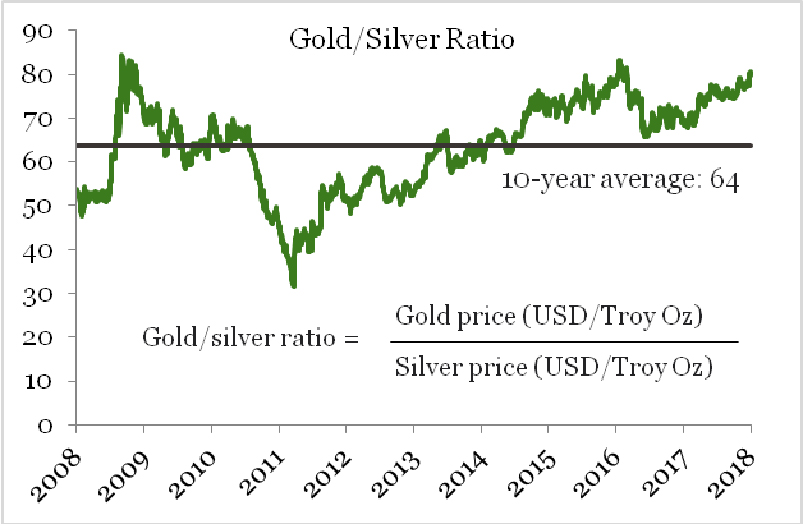
Product information
ETFS Physical Gold Download Factsheet
ETFS Physical Silver Download Factsheet
CONTACT ETF Securities
Sales
Phone: +61 2 8311 3488
Email:
Trading
Phone: +61 2 8311 3483
Email:
This document is communicated by ETFS Management (AUS) Limited (Australian Financial Services Licence Number 466778) (“ETFS”). This document may not be reproduced, distributed or published by any recipient for any purpose. Under no circumstances is this document to be used or considered as an offer to sell, or a solicitation of an offer to buy, any securities, investments or other financial instruments and any investments should only be made on the basis of the relevant product disclosure statement which should be considered by any potential investor including any risks identified therein.
This document does not take into account your personal needs and financial circumstances. You should seek independent financial, legal, tax and other relevant advice having regard to your particular circumstances. Although we use reasonable efforts to obtain reliable, comprehensive information, we make no representation and give no warranty that it is accurate or complete.
Investments in any product issued by ETFS are subject to investment risk, including possible delays in repayment and loss of income and principal invested. Neither ETFS, ETFS Capital Limited nor any other member of the ETFS Capital Group guarantees the performance of any products issued by ETFS or the repayment of capital or any particular rate of return therefrom.
The value or return of an investment will fluctuate and investor may lose some or all of their investment. Past performance is not an indication of future performance.

Sponsored features
Dissecting the Complexities of Cash Indices Regulations: An In-Depth Analysis
Introduction In recent years, the world of finance has seen a surge of interest in cash indices trading as investors seek potential returns in various markets. This development has brought increased ...Read more

Sponsored features
The Best Ways to Find the Right Trading Platform
Promoted by Animus Webs Read more

Sponsored features
How the increase in SMSF members benefits business owners
Promoted by ThinkTank Read more

Sponsored features
Thinktank’s evolution in residential lending and inaugural RMBS transaction
Promoted by Thinktank When Thinktank, a specialist commercial and residential property lender, recently closed its first residential mortgage-backed securitisation (RMBS) issue for $500 million, it ...Read more

Sponsored features
Investors tap into cyber space to grow their wealth
Promoted by Citi Group Combined, our daily spending adds up to opportunities for investors on a global scale. Read more
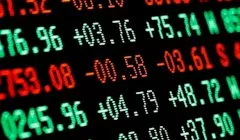
Sponsored features
Ecommerce boom as world adjusts to pandemic driven trends
Promoted by Citi Group COVID-19 has accelerated the use of technologies that help keep us connected, creating a virtual supply chain and expanded digital universe for investors. Read more

Sponsored features
Industrial property – the silver lining in the retail cloud
Promoted by ThinkTank Read more

Sponsored features
Why the non-bank sector appeals to SMSFs
Promoted by Think Tank Read more

Sponsored features
Dissecting the Complexities of Cash Indices Regulations: An In-Depth Analysis
Introduction In recent years, the world of finance has seen a surge of interest in cash indices trading as investors seek potential returns in various markets. This development has brought increased ...Read more

Sponsored features
The Best Ways to Find the Right Trading Platform
Promoted by Animus Webs Read more

Sponsored features
How the increase in SMSF members benefits business owners
Promoted by ThinkTank Read more

Sponsored features
Thinktank’s evolution in residential lending and inaugural RMBS transaction
Promoted by Thinktank When Thinktank, a specialist commercial and residential property lender, recently closed its first residential mortgage-backed securitisation (RMBS) issue for $500 million, it ...Read more

Sponsored features
Investors tap into cyber space to grow their wealth
Promoted by Citi Group Combined, our daily spending adds up to opportunities for investors on a global scale. Read more

Sponsored features
Ecommerce boom as world adjusts to pandemic driven trends
Promoted by Citi Group COVID-19 has accelerated the use of technologies that help keep us connected, creating a virtual supply chain and expanded digital universe for investors. Read more

Sponsored features
Industrial property – the silver lining in the retail cloud
Promoted by ThinkTank Read more

Sponsored features
Why the non-bank sector appeals to SMSFs
Promoted by Think Tank Read more






